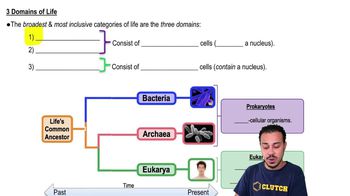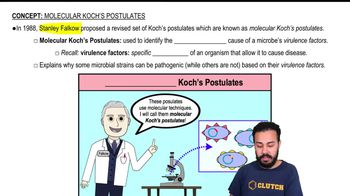Textbook Question
Match the following choices to the statements in questions 7 through 10.
a. antisense
b. clone
c. library
d. Southern blot
e. vector
A population of cells carrying a desired plasmid.
99
views
 Verified step by step guidance
Verified step by step guidance



Match the following choices to the statements in questions 7 through 10.
a. antisense
b. clone
c. library
d. Southern blot
e. vector
A population of cells carrying a desired plasmid.
Match the following choices to the statements in questions 7 through 10.
a. antisense
b. clone
c. library
d. Southern blot
e. vector
Self-replicating DNA for transmitting a gene from one organism to another.
Which of the following organisms are most closely related? Are any two the same species? On what did you base your answer?
<IMAGE>
Use the following choices to answer questions 9 and 10:
a. C. trachomatis
b. E. coli
c. Mycobacterium hominis
d. S. saprophyticus
In cases of NGU, diagnosis is made using PCR to detect microbial DNA.